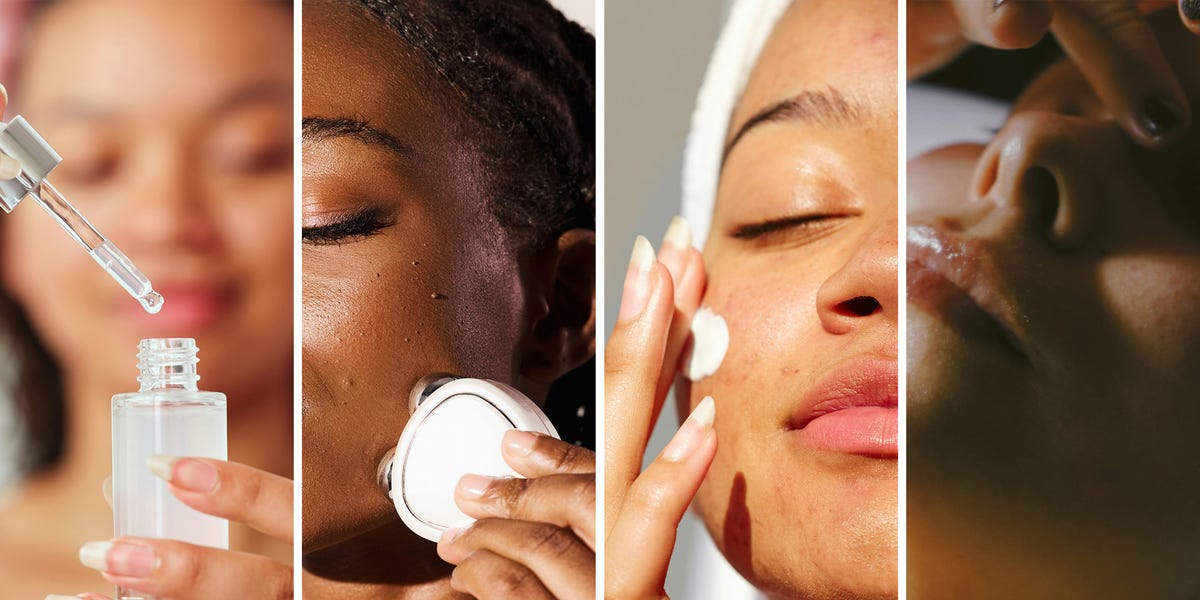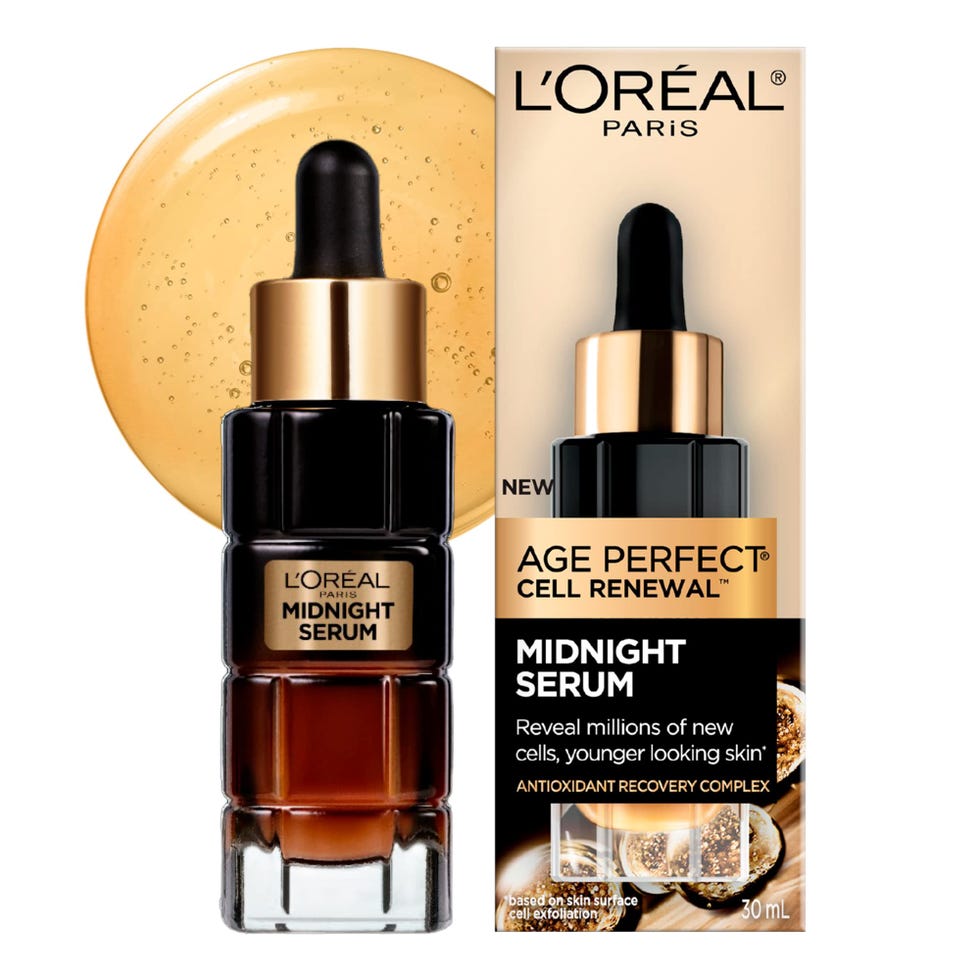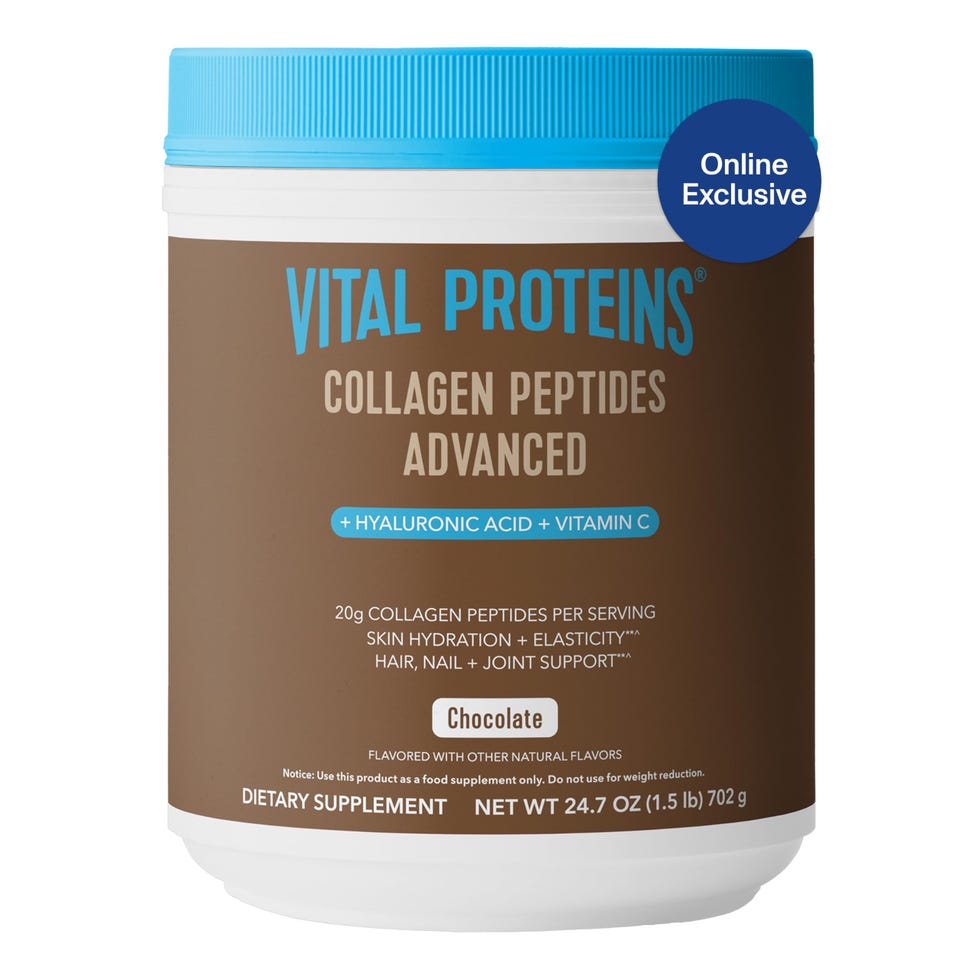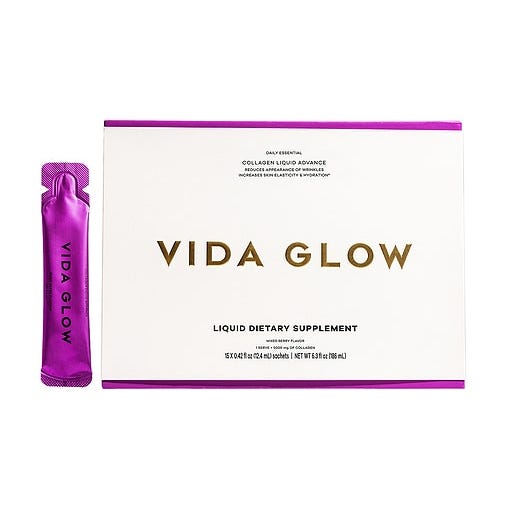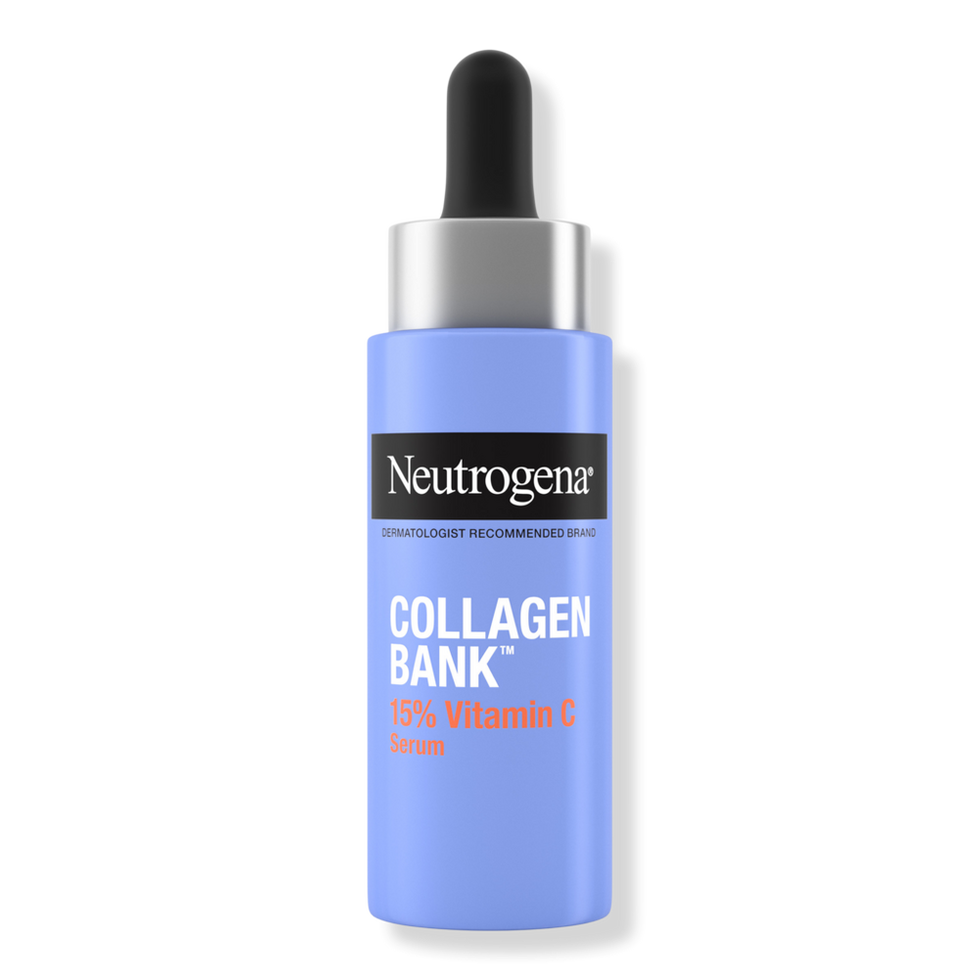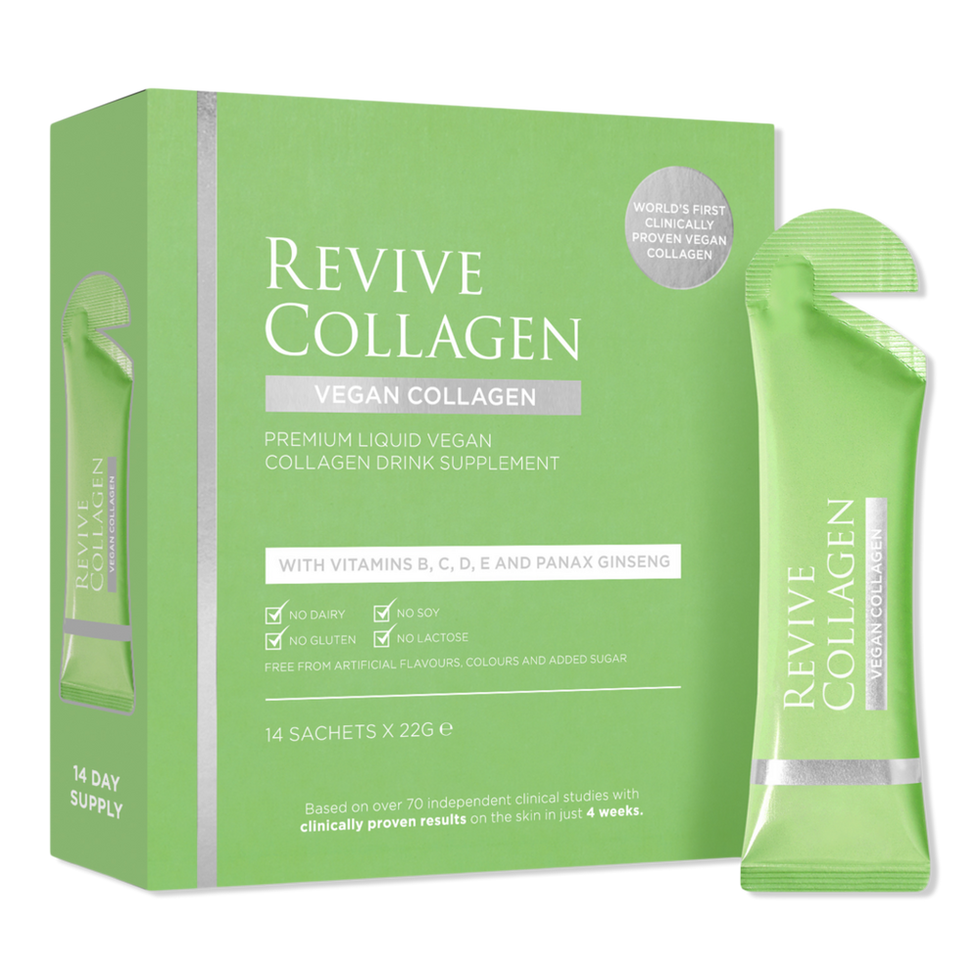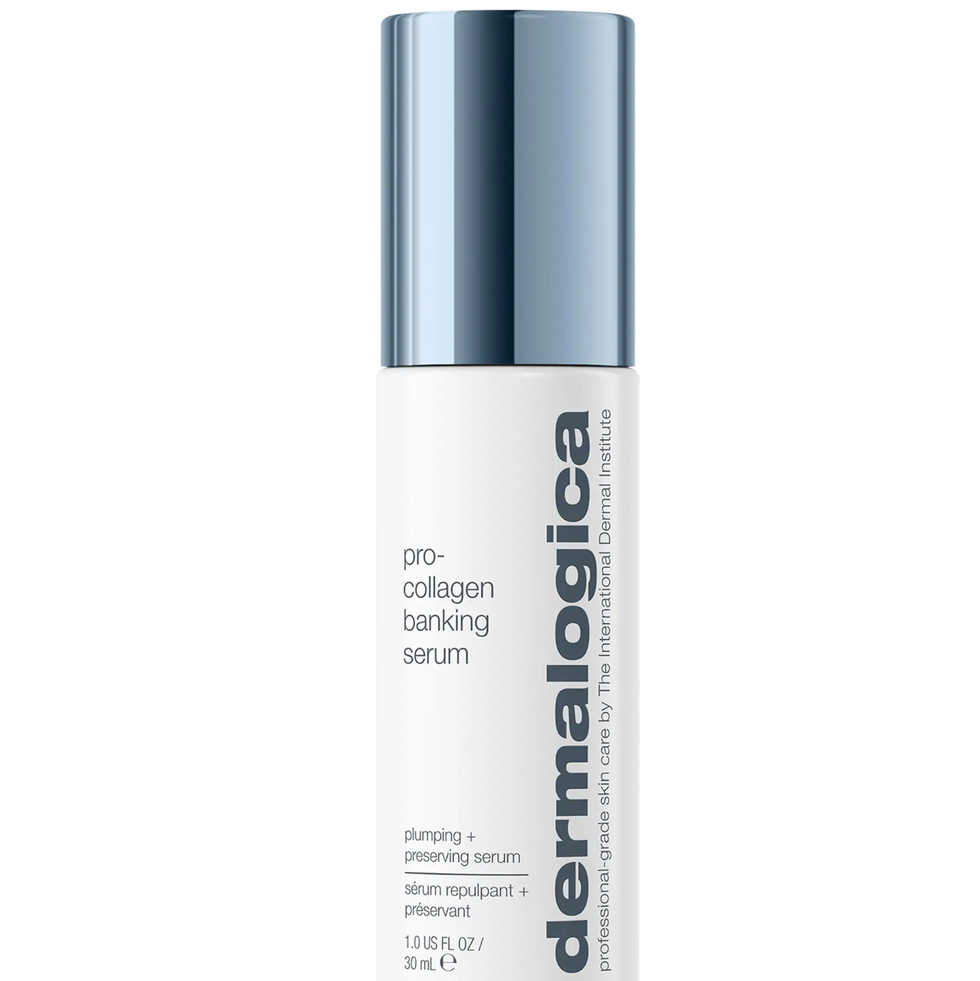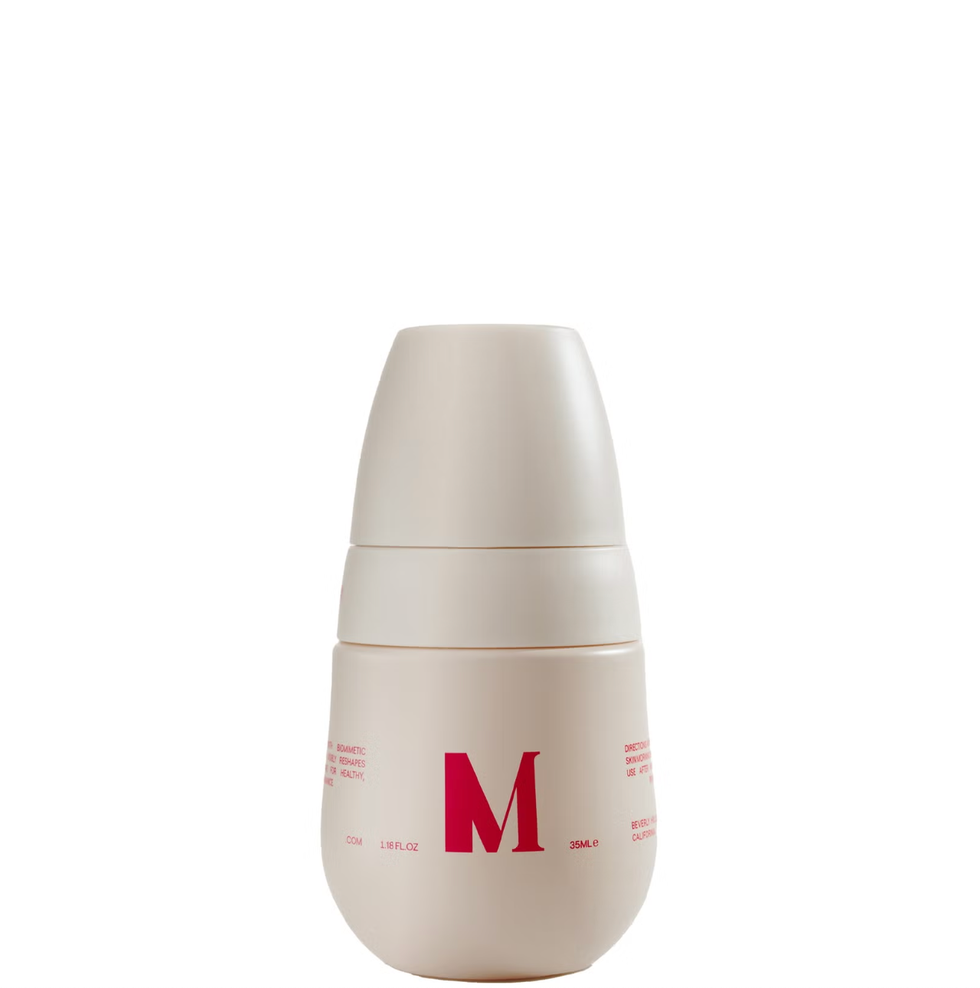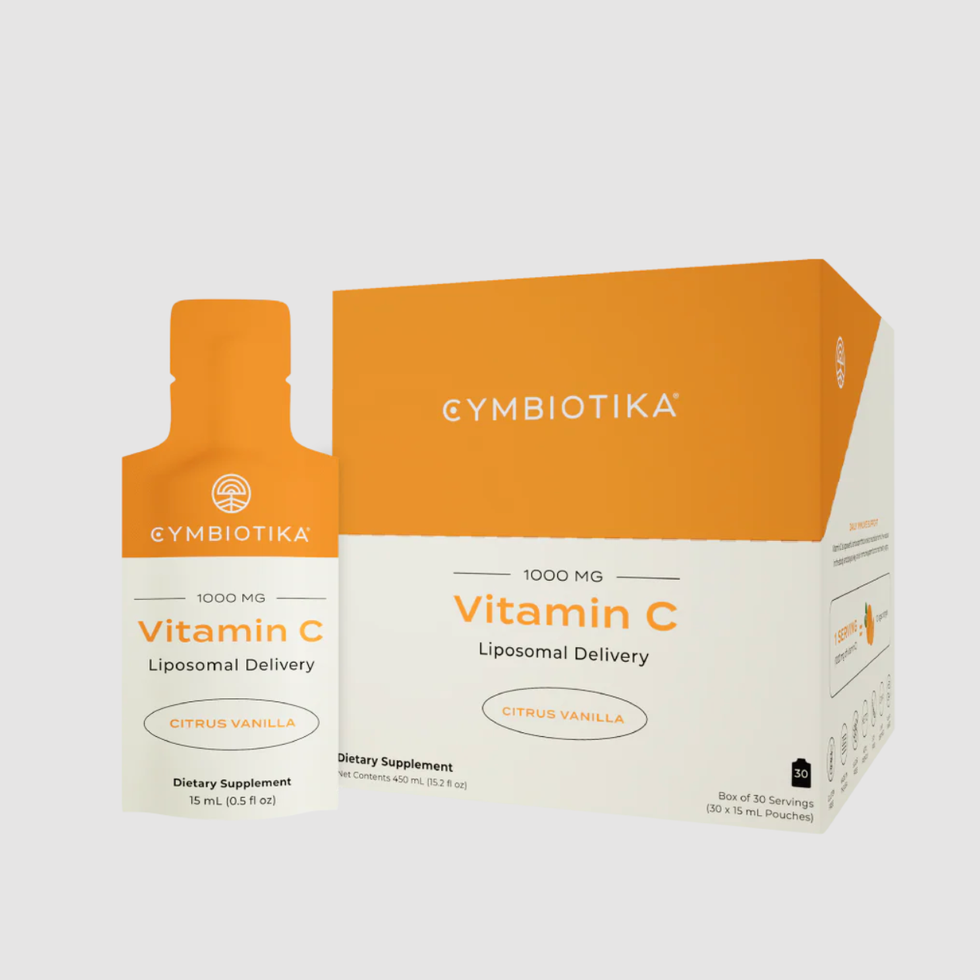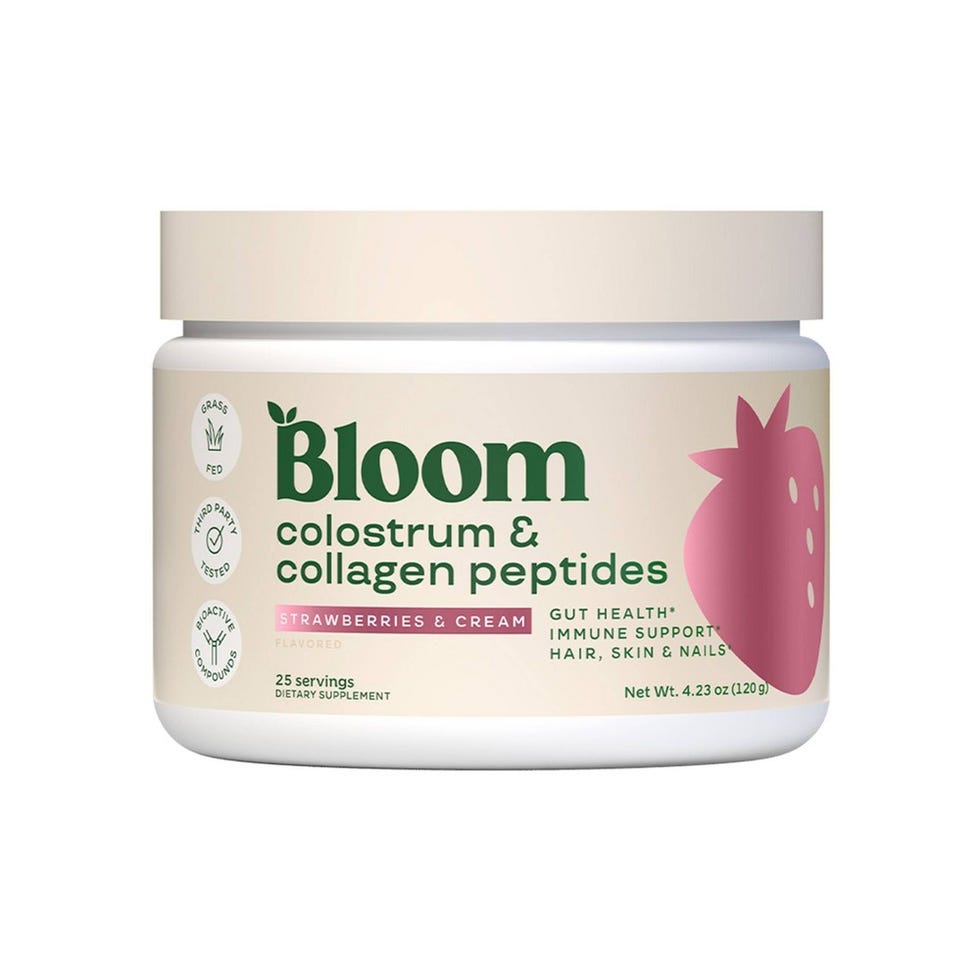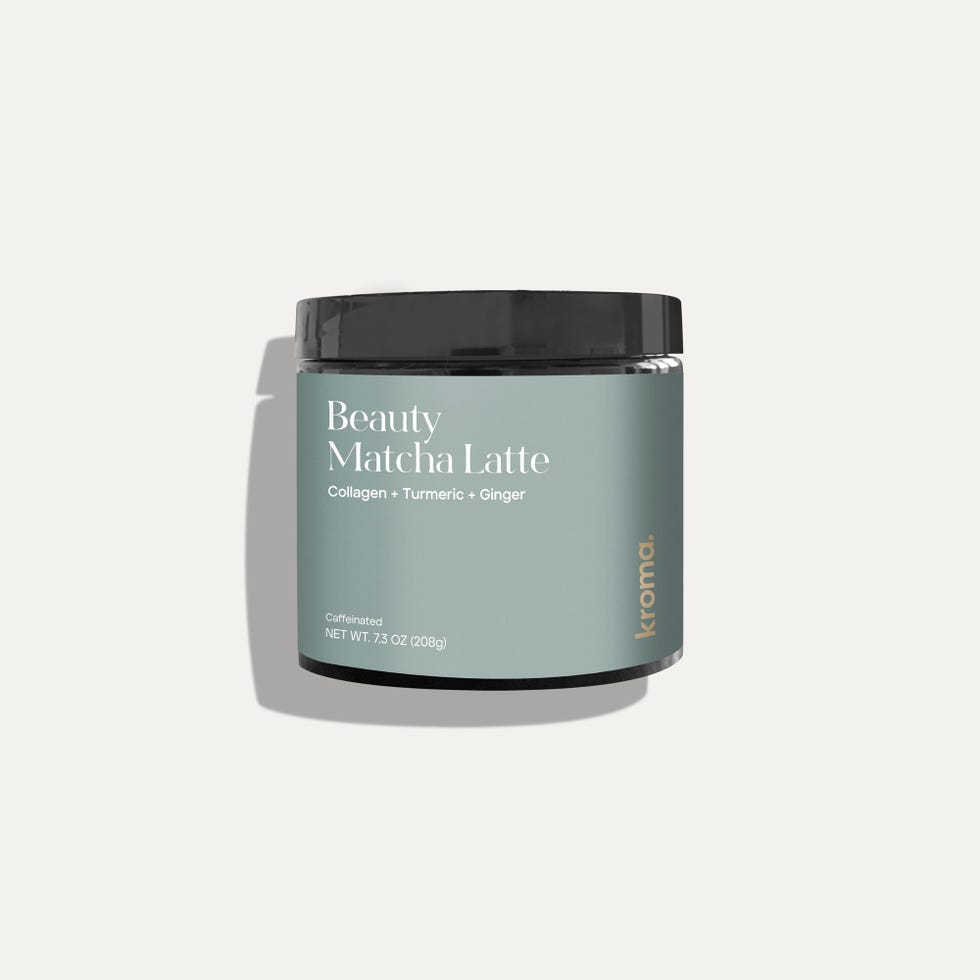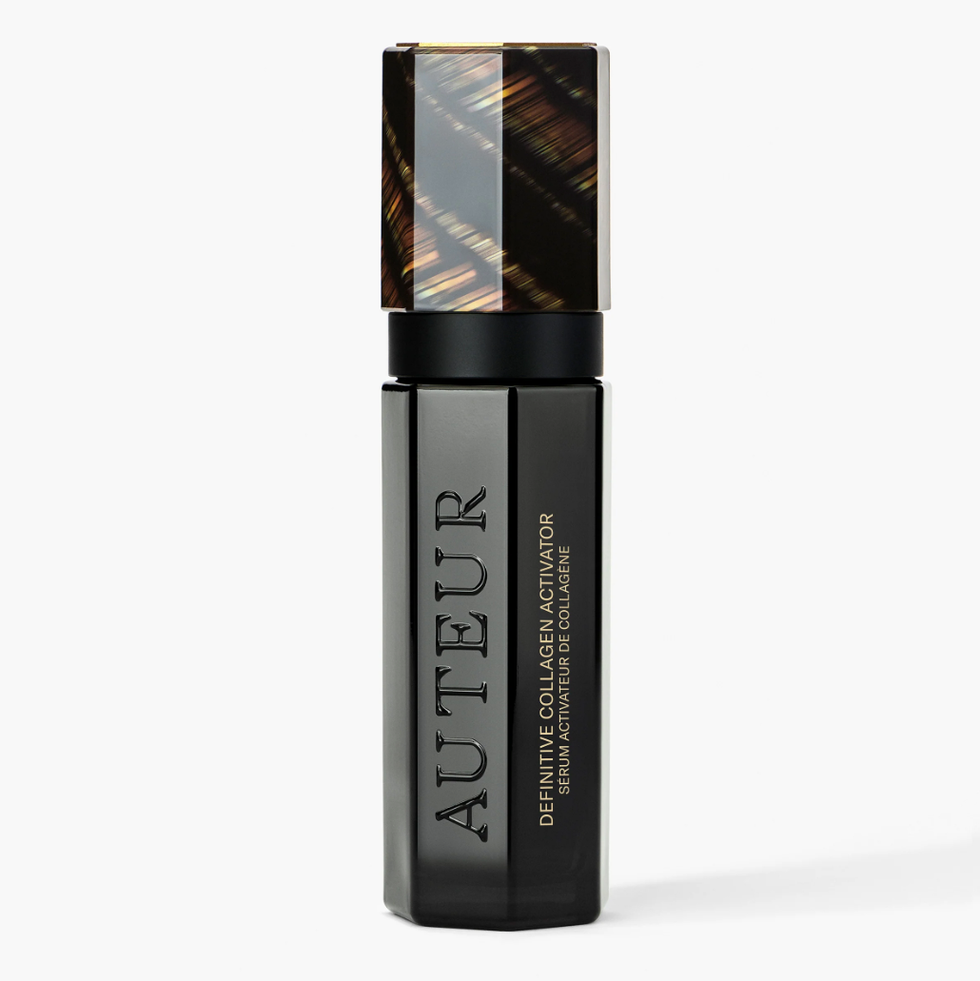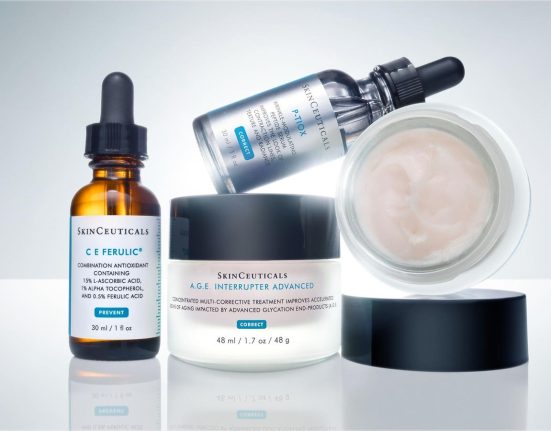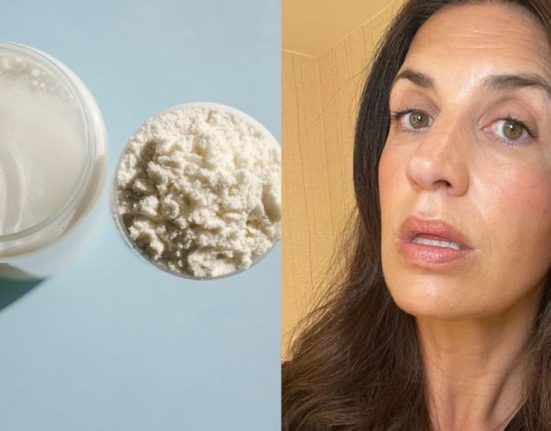Ten years ago, the term “collagen” was mostly reserved for a dermatologist’s office, but today, it’s featured on almost every serum, moisturizer, and treatment bottle on the market. Its wild popularity is because it’s one of the first lines of defense in keeping skin looking plump, youthful, and bouncy like a trampoline. While collagen is already mainstream, the ingredient has led to another viral term: collagen banking.
You may have seen collagen banking on your TikTok For You Page, and wondered how can beauty and banking ever converge? Here’s one thing to know: experts and dermatologists agree that incorporating collagen banking into your daily routine is a worthwhile investment of your time. Below, we break down the science behind collagen banking and exactly how to adopt it.
What Is Collagen?
Collagen is naturally found in the skin and is responsible for keeping the skin bouncy and firm. However, collagen depletes with age, about one percent every year, starting as early as our 20s. “It’s a protein that is created by fibroblasts in the extracellular matrix of skin. You can think of it as the scaffolding of your skin; collagen gives it support, firmness, and a smooth appearance,” shares Justine Hextall, dermatologist for La Roche-Posay, who adds that both collagen and elastin (another skin protein) give skin its firmness, elasticity, and bounce.
“We start to lose collagen as an intrinsic part of the aging process, which starts as early as our 20s, and continues to climb by one percent each year thereafter,” she adds. The first telltale signs of collagen loss include fine lines, wrinkles, loss of volume, and a lack of firmness.
All collagen isn’t created equal, though. There are two different types of collagen: Type I, which is more abundant and strengthens the skin’s structure, and Type III, which helps with skin elasticity. “Type one accounts for 80 percent of skin’s collagen, while type three accounts for 15 percent,” Hextall explains.
While menopause and the reduction of estrogen strongly contribute to decreased collagen levels, most of the loss comes from external aggressors, such as sunlight, pollution, and even a poor diet. “Eighty-five percent of skin aging is related to external aggressors,” Dr Hextall adds. This means that there is a strong case for trying every which way to prevent collagen loss, which is exactly where collagen banking comes in.
What Is Collagen Banking?
“Think of collagen banking like setting up a pension plan for your skin—the earlier you start investing, the better the long-term payoff,” says Rabia Malik, a dermatologist with a residency at the Harrods Wellness Clinic. “It’s all about supporting your skin’s ability to stay firm, plump, and resilient before the signs of aging fully take hold,” Malik’s philosophy has always focused on prevention over intervention, which is the same idea behind collagen banking. “Collagen banking has been my go-to for over a decade; it’s about working with your body, not against it,” she adds.
While dermatologists and experts support collagen banking as a way to maintain healthy skin, many perceive the trend as a one-and-done cure to ward off wrinkles (which isn’t the exact case). “It’s a buzzy social media term, but it needs to be looked at in the sense that you are investing at an earlier age to gain more benefits in the long run,” says Katharine Mackenzie, a facialist and founder of KMP Skin.
“It’s all about adapting your skincare routine, with ingredients like peptides and vitamin C, what you ingest, exposure to extrinsic aging factors, such as sun, pollution, smoking, and incorporating treatments like microneedling or lasers that help to stimulate collagen production,” she adds.
How to Incorporate Collagen Banking Into Your Routine
“It’s never too early (or late) to start thinking about collagen preservation,” Malik says, urging that you also don’t need to overhaul your life or routine overnight. “Whether you’re 25 or 55, your skin can benefit from the principles of collagen banking. It’s all about consistent support and smart strategy.”
“Start with small, consistent habits—from wearing sunscreen daily to using actives like retinoids or peptides, which can help strengthen the skin’s collagen network over time,” she says. “The key is to start and stick with it.”
Malik recommends taking a three-pronged approach—incorporating skincare tools and active formulas, taking collagen supplements, and looking at your lifestyle and routine holistically. Also, focus on skincare that defends against environmental aggressors, such as vitamin C and ferulic acid, Hextall says. “I would recommend a routine that protects the skin from environmental stressors that can damage our collagen,” she notes.
Next, incorporate supplementation through nutrient-based supplements or targeted collagen. “There’s some promising data on hydrolysed collagen supplements, but I prefer to support collagen production with nutrients we know work, like liposomal vitamin C and a strong topical routine,” Malik adds. Collagen supplements can be divisive, but it’s essential to note that not all are created equal. Ensure you always consider the type of collagen, its source, and the delivery system before selecting the best one for you.
As Malik notes, collagen banking is all about adopting a regenerative approach. “It’s slower, yes, but the results are more natural [than injectables], longer-lasting, and more in sync with your biology,” she notes. Collagen banking is all about harnessing the right treatments and active ingredients to help build and store collagen reserves, but also ensuring you adapt your lifestyle. The amount of sleep you’re getting and your stress levels yield the best results, too.”

